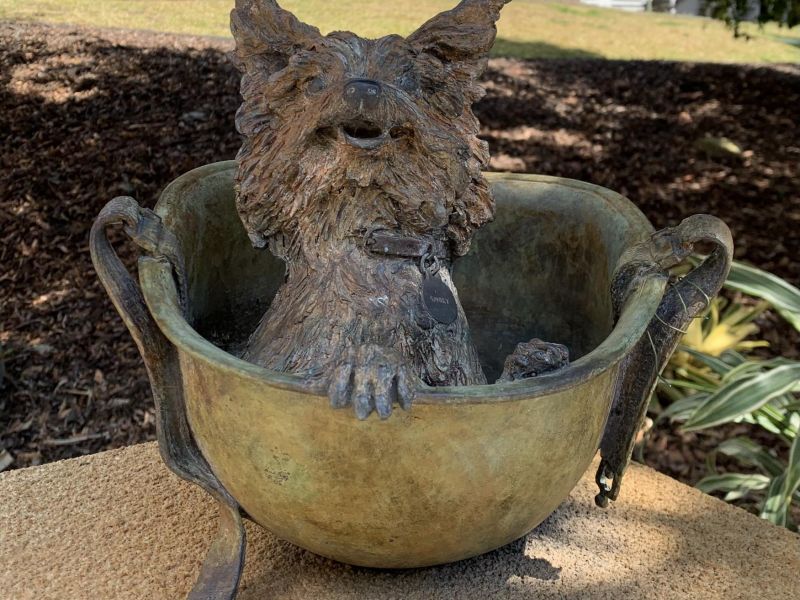Smoky the Brave War Dog
Smoky was a small Yorkshire Terrier born in Brisbane, Queensland, Australia in 1943. She was originally owned by an American Army nurse, Lieutenant Grace Guderian, who took the little dog to New Guinea when she was deployed there during WW2. Unfortunately the dog became lost during a raid and eventually fell into a foxhole from which she couldn’t escape. A soldier heard her cries when he stopped to fix his truck and rescued her. He later sold her to his mate, Corporal William (Bill) Wynne and so began a remarkable lifelong bond and partnership that endured until Smoky’s death.
Smoky had no formal training as a war dog so during her time with Bill, who served with the US 5th Army Air Force, 26th Photo Reconnaissance Squadron in New Guinea, Biak Island, Luzon and Okinawa, she had no access to veterinary care or a proper balanced diet. She survived walking on coral, insect bites, bouts of illness, hot and humid weather conditions and a typhoon. Bill used to bathe Smoky daily in his helmet to help prevent ticks and keep her comfortable in the tropical heat.
Smoky was popular with Bill’s unit and became the squadron’s mascot and later won a competition as best mascot for the SouthWest Pacific Area when Bill submitted a photo of Smoky in his helmet to Yank Down Under magazine. His army mates jokingly fought over who would get Smoky if anything happened to Bill. This made Bill train her to hang in a soldier’s pack and parachute from a plane. Smoky flew 12 air/ sea rescue and photo reconnaissance missions with Bill, survived 150 air raids and a kamikaze attack. She earned eight battle stars and was awarded the rank of Corporal.
Smoky’s most daring war feat was to occur at Lingayen Gulf on the island of Luzon. Engineers were building an airfield and needed to lay a telegraph cable under the runway. This potentially could take three days to dig and expose soldiers and aircraft to enemy fire and bombings. A partially covered culvert about 21 metres long was found through which the wire could be laid but it was very narrow - about 200 mm diameter. A plan was hatched where a communication line was tied to a kite line that was attached to Smoky’s collar and Bill called to her from the other side of the airfield to go through the narrow culvert. Without any training to do this, no visual contact with Bill and potential snakes hiding in the culvert, Smoky plunged in and crawled through to Bill in several minutes. The communication lines were laid and many soldiers and planes were saved.
Smoky was smuggled back to America by Bill at the end of the war in his oxygen mask carry case as animals were banned from homeward bound ships. She lived with Bill and his family until she passed away in her sleep in 1957 and was buried in an ammunition box in a park in Cleveland, Ohio.
 Tracey Barton
Tracey Barton